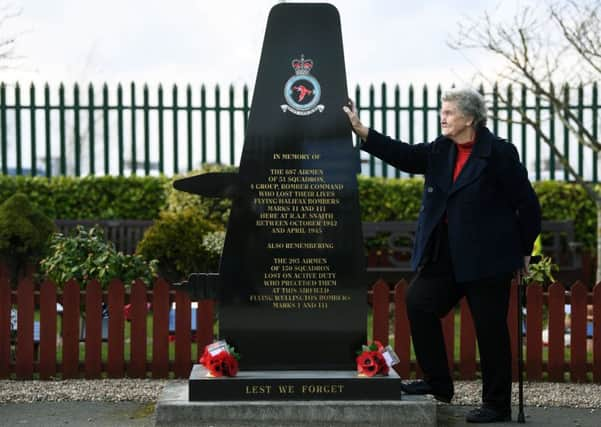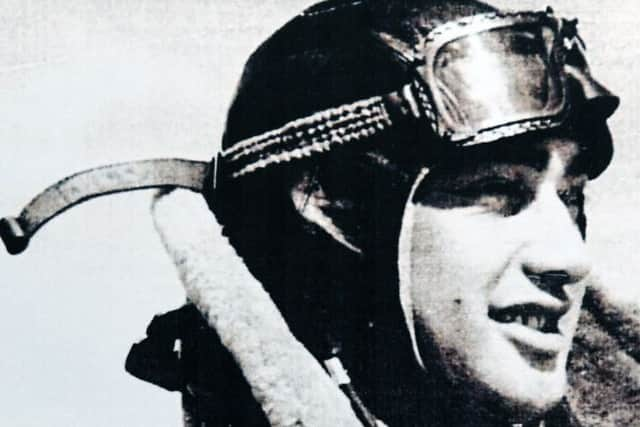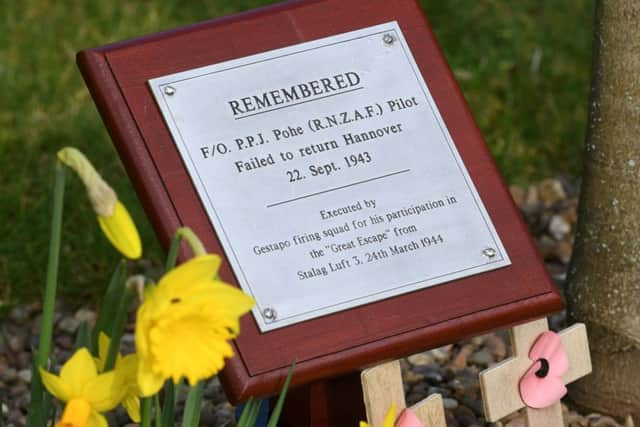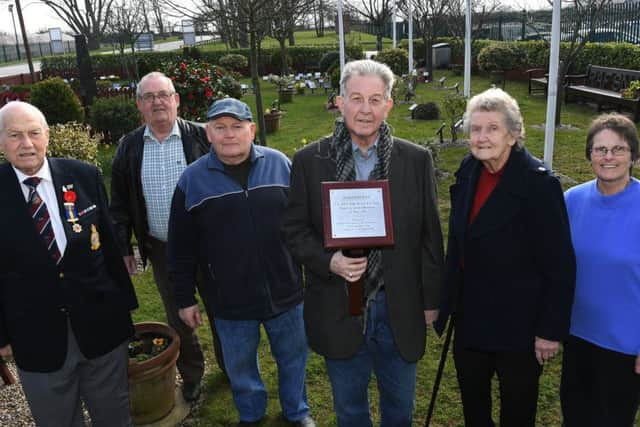The Great Escape at 75: Yorkshire village’s special connection to Maori pilot involved in break-out


As a little girl growing up in the East Riding of Yorkshire during wartime, Renee Ounsley waved off the constant stream of Allied planes that left for Germany from RAF Snaith on highly-dangerous bombing missions. Hundreds of men who flew from the base and were seen off by Renee and her friends were never to return, including a Maori pilot called John Porokuro Patapu Pohe, who went on to be involved in one of the war’s most famous episodes – The Great Escape.
The Great Escape happened exactly 75 years ago today and last night, a special gala screening of the famous 1963 film inspired by the real events at the Stalag Luft III prisoner-of-war camp took place in London, presented by historian Dan Snow.
Advertisement
Hide AdAdvertisement
Hide AdBut the event is also being remembered today in Yorkshire, where a memorial garden to Pohe and the hundreds of other airmen who flew from RAF Snaith now stands at the location where the airbase once stood. The airbase is actually in the village of Pollington but after being established in 1941 for the war effort was called RAF Snaith to distinguish it from the similar-sounding RAF Pocklington.


Renee, now 86 years old and a retired PE teacher, played an important role in establishing the memorial garden, which has been in place since 1995, and also wrote a book about Pohe’s exploits.
Growing up in the nearby village of West Cowick as the daughter of the foreman of a local brewery, she says the events of World War Two remain fresh in her memory all these years on.
“We used to play in the farmer’s field and wave to the men on the planes as they were leaving. We liked to think they were waving back,” she recalls.
Advertisement
Hide AdAdvertisement
Hide Ad“It was almost normal to us growing up. We were just interested in everything that went on.”


But while there was some excitement for young children, the war took a great toll on adults and 892 men who flew out of Snaith went on to lose their lives.
Renee says she can still remember her parents talking about the deaths of pilots – as well as the relief she felt the day the war came to an end.
“I was at Goole Grammar School and we used to wait outside for the bus. Somebody shouted over to us and said the war is over and the noise from us on the bus was horrendous with all the cheering!”
Advertisement
Hide AdAdvertisement
Hide AdIn the years that have passed, Renee and other locals have made great efforts to preserve the memory of the men who served the war effort from RAF Snaith.


The airbase closed in 1946 and is now partly covered by the M62, as well as used as a site by garden aggregates firm Kelkay, who have supported the continuation of the memorial garden on their grounds alongside a committee led by chairman John Staveley-Churton, vice-chairman Peter Gulliver and secretary Margaret Cromack.
One of the men to serve from the base was John Pohe – who became affectionately known as ‘Joey Pohe’. Pohe had dreamed of becoming a pilot as a boy growing up on his father’s farm in New Zealand. His chance came in World War II when New Zealand entered the war and provided personnel for service in the RAF and the Royal Navy. He became the first Maori pilot in World War II.
After gaining his flying badges and training in Canada, Pohe arrived in England in 1941 and was initially posted in Berkshire.
Advertisement
Hide AdAdvertisement
Hide AdAfter taking part in more than 20 perilous bombing raids when the average crew member only survived six, in 1943 he was posted to Yorkshire, initially to Rufforth and then Pocklington, before being sent to join 51 squadron at RAF Snaith.
The flying officer was captain of a Halifax aircraft that set off on the evening of September 22, 1943, for a raid on Hanover but failed to return. All of its crew were listed as missing after they were shot down on the way back from the raid and by the end of October, the International Red Cross reported Pohe was a prisoner of war at Stalag Luft III, which had been specially built on sandy ground as a way of preventing escapes.
Pohe was one of the 100 chosen escapees who made their way through a painstakingly-constructed tunnel deep below the surface on the evening of March 24 and morning of March 25, 1944.
He was also among the 76 escapees who made it out after the 77th man was spotted by a guard - as well as the 73 that were recaptured.
Advertisement
Hide AdAdvertisement
Hide AdFifty of them, including Pohe, were subsequently executed by the Gestapo. Pohe and four of his comrades reportedly refused blindfolds before they were shot at the side of a road on March 31.
A plaque to Pohe was placed in the Pollington Airfield Memorial Garden, which was opened by locals in 1995 on the grounds of RAF Snaith. The garden had been the dream of the late RAF veteran Ricky Pearce, who flew in more than 30 operations and wanted somewhere to remember his fallen comrades who had also been based at RAF Snaith. In addition to the plaques, the garden includes a memorial stone that remembers the 687 airmen of 51 Squadron, 4 Group, Bomber Command who lost their lives on missions between 1942 and 1945, as well as the 205 airmen of 150 Squadron who preceded them in being based at the airfield and also died.
Memorial plaques have also been put in for veterans who survived the war but subsequently died, while twice a year local residents meet up with veterans and serving members of the two squadrons for a service of thanksgiving in Pollington church, followed by a visit to the garden for wreath-laying.
In 2007, a propeller from a Halifax bomber that had been found in The Wash on the east-coast was also installed as part of the garden. The committee behind the memorial garden spent several years trying to trace Pohe’s family to tell them about its existence without success.
Advertisement
Hide AdAdvertisement
Hide AdBut in 2007, Pohe’s brother had been over in England paying a visit to the Yorkshire Air Museum in Elvington when he started speaking to a volunteer called Ken White who knew about the Pollington plaque.
White phoned Renee and Pohe’s brother Kawana came to the spot immediately with his wife and a friend. As Kawana is blind, the inscription on the plaque was read out to him by Isabel Hesp, who at that time looked after the garden with her husband Michael. A replica of the plaque in Braille was subsequently created and sent out to Kawana.
Pohe’s family returned to Pollington in April 2009 and a special Maori ceremony was held to take his spirit back to New Zealand. The event was attended by dozens of former veterans, as well as a large crowd of locals.
Renee completed her book about Pohe in March 2010, selling copies to raise proceeds for the upkeep of the memorial garden. But she also sent free copies to his delighted family in New Zealand. She says she takes the time to remember him. “When it comes to the anniversary and his birthday, I always put poppies and new flowers on his plaque,” she says.
Documentary made of life
Advertisement
Hide AdAdvertisement
Hide AdPohe’s life story was the subject of an hour-long documentary on New Zealand television in 2008 called Born to Fly.
The filmmakers even managed to track down Tom Thomson, the last surviving member of Pohe’s crew, who was living in Canada.
More than 100 actors, crew and musicians participated in making the documentary and Pohe’s real-life nephew Wilson Smith played his father, with other family members taking roles as well.
Smith said at the time: “It became very real for us. We relived their grief and emotion all over again. We were even wearing their clothes.”
Pohe had also become known as ‘Lucky Johnny’ due to his many narrow escapes on his different missions.